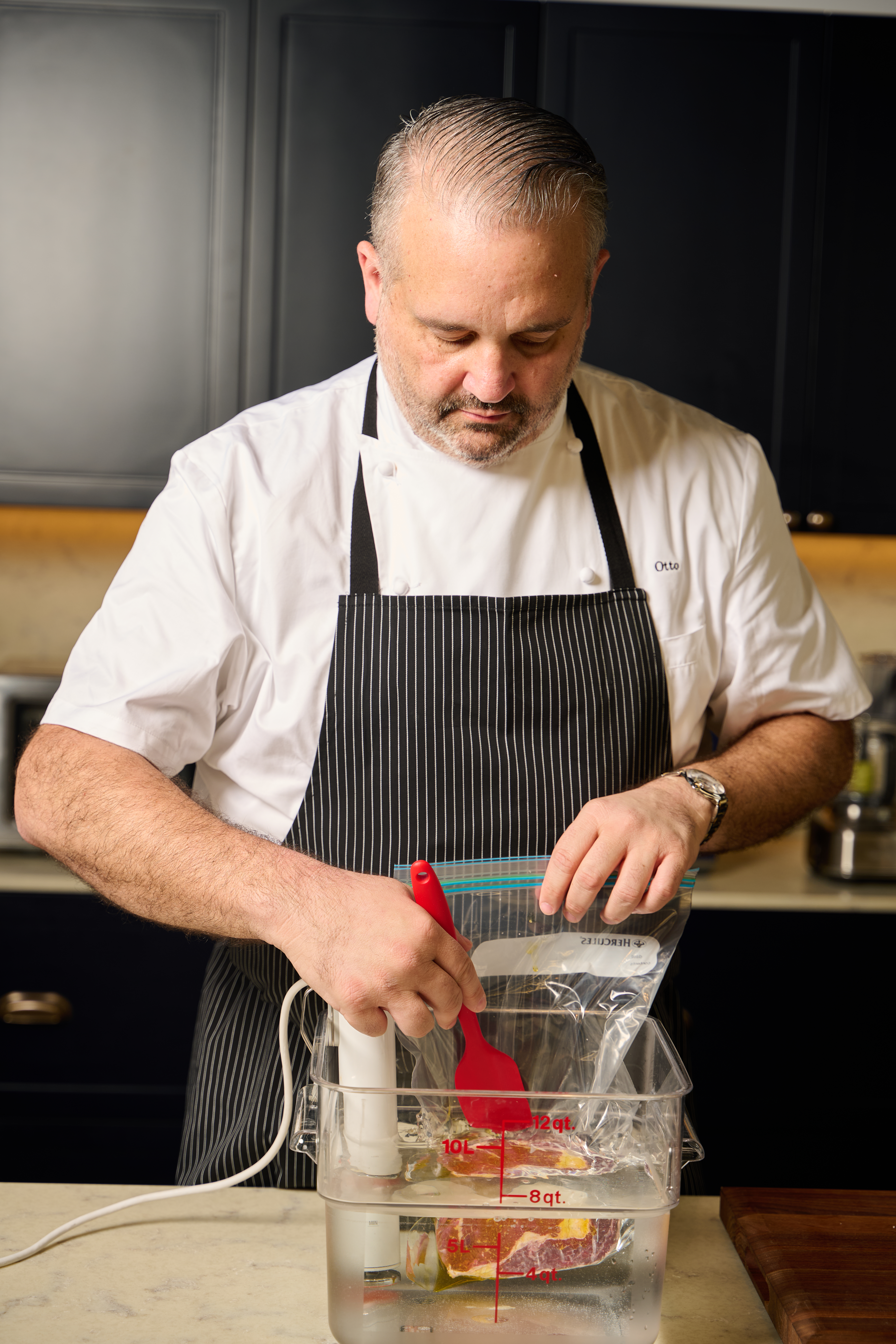
Sous vide cooking is no longer the exclusive domain of chefs. With more home cooks embracing this precise, low-temperature method, butchers can take advantage by preparing ready-to-cook products that maximise carcase utilisation while meeting growing consumer demand.
What is sous vide?
Sous vide refers to a method of cooking vacuum-sealed food in a temperature-controlled water bath. Otto Romer, Former Head of Development at the Michelin-starred Fat Duck restaurant and now Head of Cuisine and R&D Innovation at Breville, explains the appeal.
“When you look at an oven, for example, it will have hotspots because of how it’s designed, so meat may not cook evenly. In the case of sous vide cooking, however, the water is at the same temperature throughout the container. This means what you’re cooking will always reflect the temperature you set the water, and the meat will be cooked through evenly every time.”
For butchers, sous vide opens up significant opportunities around carcase utilisation. Otto learned this approach when developing retail sous vide products for Waitrose, where they had to ensure every part of the animal had a purpose, avoiding surplus on popular cuts while other parts went to waste.
Unlock the full value of the carcase
The real magic happens with secondary cuts that benefit from the gentle, extended cooking that sous vide provides.
“You can sous vide just about any part of the animal,” Otto says. “The time and temperature just need to match the texture and fat content. I’ve done everything from a steak all the way through to tongue and ribs.”
He says ribs in particular respond beautifully to sous vide, becoming incredibly tender while retaining their rich flavour.
“I think sous vide offers an alternative on how you want it finished. A rib that is falling off the bone, that is nice and juicy? For me, that is success, and I think that's something that is easily replicable through this cooking method.”
In the case of lamb, Otto says shoulder is ideal.
“Whether you want a lamb shoulder that’s sliceable or pull-apart, you can achieve the same thing just by knowing what temperature and how long to cook it for.”
The other benefit of sous vide is the way it elevates budget cuts into a meal that is close to what you can achieve with premium cuts.
“You can take harder-to-sell cuts like bavette [flank], and because sous vide tenderises when you cook it for a long time, you can have an amazing result."
Value-adding opportunities
The vacuum sealing required for sous vide cooking provides butchers with an opportunity to showcase their signature products, whether that be condiments, marinades or butters.
Otto says, “One of the beautiful things about working with butchers is a lot of the ones that I've seen have their own compound butters or flavour butters, or they have their own spices. They can vacuum seal it and promote it for sous vide cooking at home.”
He envisions a choose-your-own approach: “Give your customers choice: choose your steak, choose your rub or your flavour butter. We vacuum pack it for you, or we give it to you so all you do is put it in a Ziploc bag at home then cook it.”
Vacuum sealing opens up the pores of the meat, Otto adds, so flavours penetrate more deeply, meaning you can use less marinade than you might normally.
Selling Sous Vide
When speaking with customers, Otto recommends highlighting the versatility of sous vide.
“If I was a butcher selling sous vide to a customer, I would tell them they can cook everything from filet mignon to flank steak and get really great results every time.”

